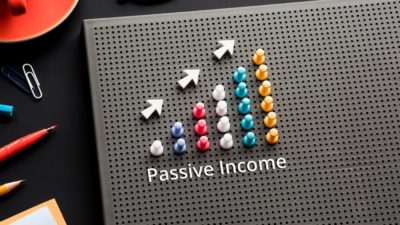Recently, I’ve read many articles suggesting that the UK stock market is a dead end, backwater or graveyard for global investors. While the FTSE 100 does indeed contain many ‘old economy’ businesses, I’d largely disagree with this negative outlook.
Indeed, when I look at UK large-cap shares today, I see dozens of candidates for my family portfolio. To me, London-listed shares look unloved, unwanted — and unfairly cheap. One day, that might change.
What’s so bad about the FTSE 100?
One reason why the Footsie gets a bad press is its long-term underperformance against the US S&P 500 index. Here are the returns from both indices over five timescales:
| Index | FTSE 100 | S&P 500 |
| Three months | +0.6% | +4.7% |
| Six months | +12.4% | +14.4% |
| One year | +1.6% | -7.0% |
| Five years | +5.1% | +53.7% |
| Since 13 April 1984 | +585.6% | +2,509.5% |
Over four of these five periods (except one year), the S&P 500 has outperformed the FTSE 100. Furthermore, over the past 39 years, the American index has absolutely thrashed its British cousin.
Say I invested £1,000 into the Footsie and the S&P 500 almost 40 years ago. Today, my Footsie holding would be worth £6,856. Meanwhile, my US stock would be worth a whopping £26,095.
Clearly, I know which investment I’d prefer to have made back then. But hindsight is a wonderful thing, while past performance is no guide to future returns.
Now for two warnings
There are two major problems with my above analysis.
First, these returns ignore currency variations between the British pound and the US dollar. For instance, in April 1984, the GBP-USD pair stood at around $1.424. Today, it hovers around $1.242.
In other words, the pound is worth less against the dollar today than 39 years ago. This makes my dollar investment in the S&P 500 worth around 14.7% more today in my home currency.
The second problem is the above returns exclude cash dividends. In the US, most companies regard dividends as a poor use of their spare cash. Often, US corporations prefer to reinvest their profits into future growth.
Meanwhile, reinvested dividends are a major component of the long-term returns from UK shares. Today, the Footsie has a dividend yield of 3.7% a year, while the S&P 500’s cash yield is a mere 1.7% a year.
Nevertheless, after adjusting for currency fluctuations and dividends, it’s clear that the S&P 500 has beaten the FTSE 100 for most of my investing life (which began in 1986).
Why not own both?
Today, US stocks account for more than half (58%) of the global equity market. Also, at almost a quarter of world output, the US economy is the largest by far. So I’d be mad not to keep investing in the US, agreed?
In comparison, the UK stock market is valued at under £2.5trn, representing just 4.1% of total global equities currently. At end-1999, this proportion was 9.4%.
Even so, I’ll keep investing in undervalued and overlooked UK stocks, especially cheap FTSE 100 shares. Why? Because the Footsie trades on a modest price-to-earnings ratio of 12.4 and a tasty earnings yield of 8.1%. And as a lifelong bargain hunter, I love buying both stocks and socks at discount prices!







